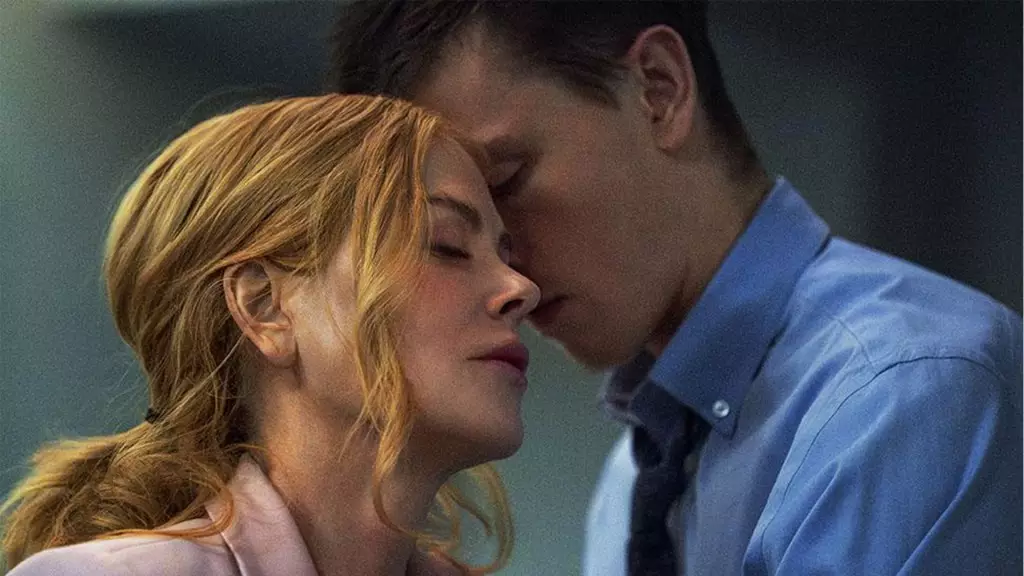In the realm of cinema, the art of crafting an erotic scene that resonates deeply with audiences requires a unique blend of imagination and authenticity. Halina Reijn’s film “Babygirl” demonstrates how the raw edges of real-life experiences can enrich fiction, creating moments that are not only visually arresting but also intellectually stimulating. This article explores Reijn’s creative process behind one of the film’s most provocative scenes and the philosophy she employs regarding sexuality and storytelling.
At the heart of “Babygirl” lies a scene that commands attention: a young intern, Samuel, portrayed by Harris Dickinson, sends a glass of milk to his boss Romy, played by Nicole Kidman, at a bar. The imposition for her to drink it serves as an emblem of dominance and submission—a visceral nod to the animalistic nature within human interactions. Reijn’s inspiration for this scene is rooted in an actual encounter she experienced while onstage in Belgium, where an unexpected act from a younger male colleague led to a revelation about seduction and power dynamics.
Reijn reflects on the moment as emblematic of raw bravery; the young actor’s act of ordering her a glass of milk was not merely a mundane gesture but a significant, candid moment that showcased a courageous grasp of vulnerability. In an industry often tempered by polished pretense, a simple glass of milk becomes a catalyst for exploring deeper themes of desire and interpersonal connections. This blend of reality and symbolic artistry invites the audience to ponder the complexities of sexual attraction beyond the superficial.
Reijn challenges conventional interpretations of eroticism by suggesting that the most exhilarating aspects of sexual relationships often lie not in physicality but in imagination and suggestion. The act of Romy consuming the milk while the tension builds creates an atmosphere suffused with erotic energy—an effect that stems more from fantasy than from explicit actions. In her words, “Real, shocking sex is often not at all two bodies banging into each other.” This perspective reminds viewers that the mind’s intrigue can evoke more fervent emotions than the physical act of sex itself.
In an age where graphic depictions of intimacy dominate the screen, Halina’s unique lens offers a refreshing divergence from the norm. She emphasizes the psychological stimuli—the nuances of suggestion and the subtleties of interaction—that can often elicit stronger responses than the overt displays of affection or lust. In “Babygirl,” intimate gestures, such as the power dynamics displayed through candy and petting, resonate deeply with notions of ownership and vulnerability, ultimately portraying a more nuanced understanding of sexual encounters.
Another critical layer in “Babygirl” is the exploration of power dynamics between the characters. Romy, a high-powered CEO, engages in a volatile liaison with Samuel, her much younger intern. This relationship, fraught with tension and passion, presents a rich tapestry of themes surrounding age disparity and authority that are increasingly relevant in contemporary dialogues about sexuality in the workplace. Reijn delves into the conflicts faced by women in positions of power, juxtaposing their professional prowess with societal expectations surrounding femininity and sexual expression.
By crafting a narrative that navigates these treacherous waters, Reijn opens the door to complex conversations about consent, desire, and the ethics of workplace relationships. The dynamics presented in “Babygirl” are anything but simple, inviting audience members to question their preconceptions while championing a narrative that embraces the multiplicity of human experiences.
Halina Reijn’s “Babygirl” presents a provocative invitation to reassess how we perceive eroticism in film. By weaving together personal anecdotes with overarching themes of power and psychological intrigue, she demonstrates that provocative cinema can arise from the interplay of reality and fiction. The film’s essence lies in its ability to inspire an engagement with the audience’s imagination, emphasizing that sometimes, the most significant sexual encounters occur not through physical contact but within the realms of the mind. This innovative approach reshapes the landscape of erotic cinema, daring viewers to embrace the suggestions, symbols, and subtlety that make human connections profoundly compelling.


Leave a Reply